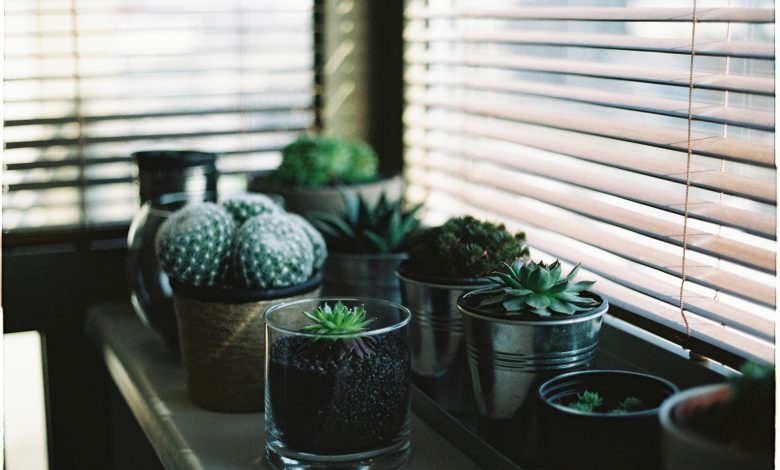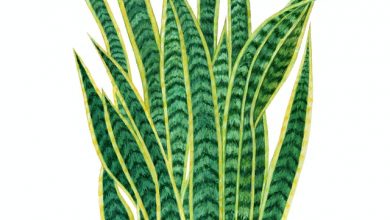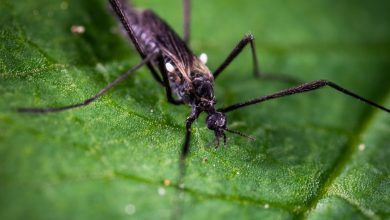How to Start a Garden in Your Apartment

You’ve just moved to the big city for that new job. There’s too much noise, no space, and grey concrete as far as the eye can see. Or perhaps you already live in an apartment, and you’ve decided to take up gardening as a hobby.
Either way, you face a whole load of challenges — more than the typical gardener. You have to worry about the smell your plants produce, the space the garden takes up, where to put them, and if you can even grow a plant in your cramped studio apartment, to begin with.
Fear not. This article is here to guide you through growing plants inside your humble abode.
Conditions
Before you start planning anything out visually and décor wise, you need to make sure that your plants can grow in the first place.
In a normal garden, you have plenty of fresh soil, lots of sunlight, rain, critters, the ability to use rotten manure fertilizer, and so much more space. That is not a luxury we have at our disposal, so we need to get techy and think small.
You can’t grow a rose bush inside your place, obviously, but you can grow some simple potted plants, flowers, or even some herbs; it just takes a little bit more effort.

Sunlight
The first real obstacle you face is sunlight. As it’s perhaps the most important factor for plant development, if you get no sunlight, then your hands are tied. However, you do still have options.
What ways can you give them natural light in an apartment, though? Well, considering that your place isn’t overshadowed by the grey vertical behemoths surrounding it, and you have one, you can plant your flowers in pots and put them on a balcony. You could also fasten some pots to your windowsill outside and grow flowers in them as well, or even on the windowsill inside if you’re afforded the luxury. Alternatively, you could plant your flowers on the apartment’s rooftop, if that’s allowed in your complex.
If you don’t have access to a lot of natural sunlight (most flowers require six to eight hours per day), then you have two options.
You can dish out the money for a grow light. This takes up more space in your flat and is quite inconvenient. As well as costing money to buy, the light eats up electricity, so your bills can see a small increase. If this doesn’t put you off, then go for it. It mimics natural light and can help you grow your plants without the sun.
Otherwise, you have to be selective about what you grow. There are plenty of herbs that don’t require much light, and vegetables, like salad greens, don’t need much either, so you do have options, albeit limited ones.
Soil
After you deal with the sunlight issue, you need to think about soil. Soil is just as important as the sun for a plant’s development. It supplies them with nutrients, water, and a place to stretch its roots.
Now, considering that you’re looking to grow a garden in an apartment, it’s a fairly safe bet to say that you don’t have any natural ground to grow in. What that means is that we cannot use good old-fashioned garden soil. The soil tends to pack down and compact in pots, which stops water from draining and eventually drowns your poor little plants to death.
To avoid this, you’re going to need to get a potting mix. A potting mix allows water and air to move about the soil easier than the traditional garden, so you don’t need to worry about suffocating your plants.
Ideally, you want a potting mix that contains fertilizer already. If not, get yourself a water-soluble one. You need to fertilize your plants to keep them healthy, but you also live in an enclosed space, so make sure you don’t get one that smells too bad.

Water
Since all your plants are going to be growing in pots and containers, you’re going to need to water them more than you would flowers growing in the ground – several times per day. So if you decide to plant them on the roof, keep in mind that you’re going to have to struggle carrying water buckets up flights of stairs every day. Otherwise, just make sure you plant them close enough to your tap and invest in a watering can. You can also get a hose that you can attach to a faucet to water your plants if you have them out on a balcony, but that’s just overkill when a simple watering can does the job fine.
If you’ve decided to grow your beauties indoors, you need to consider humidity. It can get cold in a flat, especially in certain parts of the country, so you’re going to be turning the heating on regularly. When you do this, you need to provide a little extra humidity for your plants. You can make a water mist and spray them down or be more creative and leave a tray of water on a nearby radiator to do the job for you.
You could also go one step further in the creativity department and make a homemade mini-greenhouse out of a plastic bottle and control the humidity that way.
Safety
You also need to think of safety when planting in an apartment, especially if you’re leaving your flowers outside and if you are mounting them to an outside windowsill.
If the area you live in gets a lot of wind or has heavy traffic, the gale you get can rip through your plants, destroying the leaves and blowing them over, or worst-case scenario, knowing them off their mount.
If your pots are on the balcony and this may be an issue, consider getting a wind blocker for a little extra protection, or make sure that the pots are wide enough to anchor themselves securely. If you are considering growing them on the outside windowsill, and the wind is an issue, it’s probably best if you don’t. It’s better to be safe than sorry.
Wind isn’t the only aspect of gardening in an apartment that affects safety, though. You also need to think about weight.
Flowerpots can get heavy. Soil weighs a bit on its own, and once you water it, that weight increases exponentially. So make sure your window boxes are fastened tightly, and if you’re planning on going all out and having loads of plants on your balcony, maybe check in with your landlord to make sure that’s okay.
Speaking of checking in with your landlord, you need to make sure you’re allowed to grow flowers in the building in the first place and what the restrictions are. Like mentioned above, growing on a balcony can become a health and safety issue, so many landlords may put a limit on how many plants you can grow or stop it entirely, so drop them an email to make sure.

What to Grow
So you’ve established that you can, in fact, grow plants in your apartment. Now you need to decide what you actually want to plant.
This all depends on what you’re looking for, of course. If you just want to brighten the place up and bring a bit of life into it, some colorful flowers and greenery are what you want to be growing. You may want to have a little bit of an herb garden, though, so you have fresh ingredients on hand to spice up your dishes with. Maybe you want to grow fruit and veggies to stock your fridge and cut down on grocery shopping. However, no matter what type of plant you decide to grow, you’re going to be limited on your options.
Herbs
Herbs are most flat gardener’s go-to plant. The plants don’t take up much space, look and smell great, and are practical because you can cook them. Herbs grow very well in containers and don’t get too bushy, making them a great indoor choice. There are a million and one herbs you can grow, and what you decide to go with all depends on your taste in food.
Vegetables
As well as herbs, you can also grow some veggies to bolster your pantry. Salad greens are an excellent vegetable choice to grow in an apartment. The family sprouts quickly and has deep roots; it also can survive in poor conditions, provided you care for them. In particular, lettuce is a good option here.
Tomatoes are another premium veggie choice for you to consider. It does require a large pot that can get quite heavy, so you may not be able to grow the plant to begin with, but if you can, then it’s an excellent addition.
If you’re a fan of a bit of spice in your foods, you also have the option of growing chili peppers. The plant fruits all year round and does great in small spaces.

Fruits
Of course, you don’t have to just focus on culinary dinners when deciding what to grow. You can also go with some sweet dessert components. Dwarf lemon trees, in particular, are great to grow in a flat. It requires conditions on the better side of things, with eight hours of sun and some humidity, but if you can provide that, then go for it.
For something a little less bitter, you can try growing strawberries. You need at least six hours of sun and twelve inches of soil to grow these effectively, but once you do, the plant looks as good as it tastes.
Flowers
If you’re just looking for a little something to care for, or to bring some life to your flat, there’s nothing wrong with just growing old fashioned flowers. A particularly nice greenie plant is the peace lily. This flower has earned the nickname “Closet Plant,” due to its ability to grow in low light environments, so you can grow it with very little hassle. It requires regular watering and blooms some beautiful white flowerheads amongst its plentiful green foliage.
If you want something that yields maximum results with minimum effort, go pick up a cactus. Sit one in an area that is well lit, and water once per week. That’s all there is to this plant. In particular, it looks great as a desk topper in an office if that is something that is available to you.
If you want something a little more colorful, you can try and grow marigolds. These flowers look unbelievable. The flowerhead is an orange, almost golden-bronze color that resembles the light that the sun gives off at sunset. The flower needs plenty of sunlight, so plant these on your balcony of the windowsill. Care for them right, and it can grow pretty quickly. Marigolds can also bloom all year round, so you can bring a bit of color into an otherwise bleak winter with a bit of care.
African violets are another potted plant that looks incredible. As the name implies, the flower is a deep purple and has a bit of green shrubbery to boot. It’s easy to care for, with it not needing too much sunlight or watering. Just make sure you don’t let the temperature of your flat end up in one of the extremes, and when you are watering it, do so at the base of the plant, not on the leaves.

Just because you have a specific living arrangement doesn’t mean that you need to go without the joy that is maintaining a few homegrown plants. There are plenty of species out there that grow just fine in sub-optimal conditions, and some that even thrive in them, so look around if nothing on this list strikes your fancy – you’re sure to find something you like the look of.
Apartments can often end up feeling grey and lifeless, especially if you’re in an entire complex, where all you can see is a sea of concrete, so planting some colorful flowers can really help make the place feel a little more like home.



